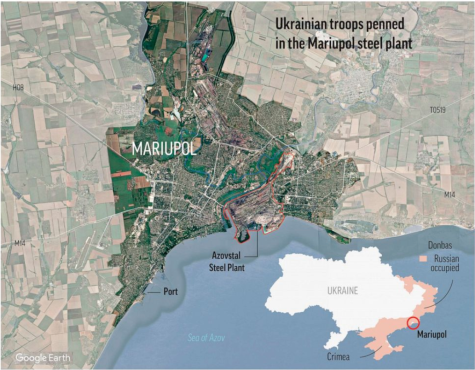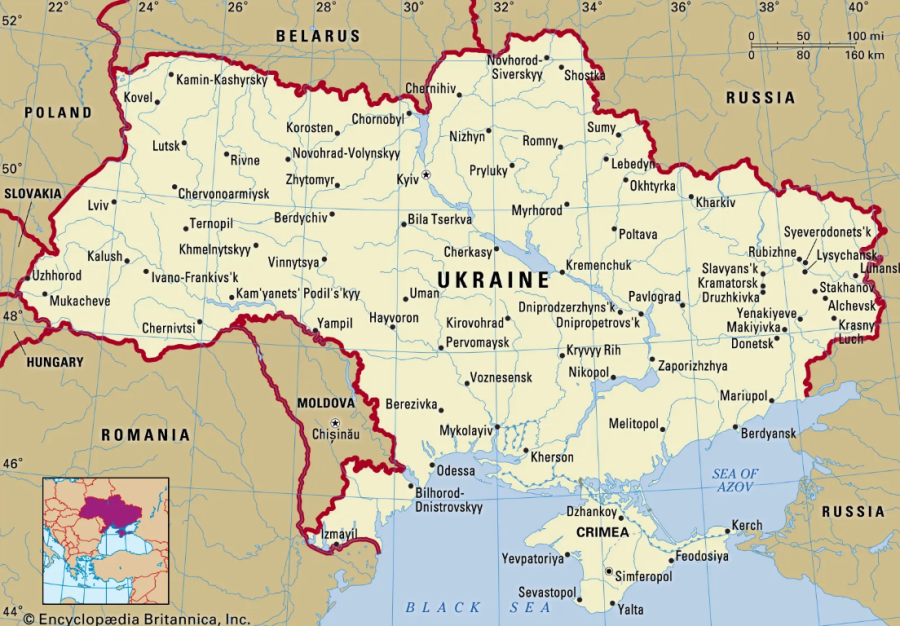The War in Ukraine is at its Turning Point. Here’s Why.
June 6, 2022
As the invasion of Ukraine passes its hundredth day, Ukraine has successfully defended its northern oblasts against Russian forces. Ukraine’s defense thus far is seen as a surprise by most Western countries who predicted Russia would easily seize Kyiv, the capital, in the first week of the invasion. Looking at the size of the Russian army, which consists of over 1 million active personnel, Ukraine’s army of 246,446 officers is four times smaller, making it a David and Goliath situation. Despite this, Ukraine is considered the victor in the first phase of the war, which, according to the New York Times, entails the Battle of Kyiv and the Battle of Kharkiv (which still continues). Regardless of territorial victories, Ukraine saw massive civilian losses as Russia targeted urban settings. The New York Times identified the war to be at its ‘turning point’ in late April as Russia concentrated its forces in Mariupol, a city with the potential of pivoting the war.
Mariupol is one of Ukraine’s largest port cities, home to 500,000 Ukrainians prior to Russia’s invasion. The city is located on the Sea of Azov and is part of Donetsk Oblast. Before the invasion in February 2022, Mariupol’s trade placed it within the heart of southeastern Ukraine’s economic activity.
Because of its proximity to Russia and annexed Crimea, control of Mariupol would grant Russia an immediate passage to central Ukraine, as well as access to the seas (Sea of Azov and the Black Sea). The exhaustion of Russian forces in northern Ukraine seen during the first phase of the war would no longer be a problem if southeastern Ukraine were to open up, as a clear path would enable the quick restoration of troops and the distribution of ammunition.

Mariupol was one of Russia’s first targets when the invasion began. News of Mariupol went viral on social media when the city’s maternity hospital was bombed on March 9, and later when their landmark theatre that sheltered over 1,000 civilians was struck, killing 600 people – despite the word “children” being written in Russian across the shelter (March 16).
Fighting shifted east in Mariupol in early April to the Azovstal steel plant where Ukrainian troops were stationed. By April 13, the plant was completely surrounded by Russian forces, trapping civilians and soldiers inside. On April 19, Russia demanded Ukrainian forces within the plant surrender; Ukrainian troops declined. On April 21, while Ukrainian forces were still trapped inside the plant without electricity, water, or humanitarian aid, Putin declared Mariupol “successfully liberated” from Ukraine. Negotiations followed on April 26, commencing evacuations within Mariupol and the steel plant.
Despite efforts by Ukraine, Russia continued with bombings, and humanitarian aid was blocked from reaching Mariupol. However, by May 7, most civilians were evacuated from Azovstal. A week later evacuations began for Ukrainian military officers.
Ukraine officially declared the end of its fighting in Mariupol on May 17. Mariupol was ceded to Russia, and evacuations were placed under Russian control. Ukraine’s hope now rests on a peaceful evacuation of remaining soldiers and civilians. Zelensky testified to this by proclaiming “Ukraine needs Ukrainian heroes alive.” On May 19, Russian officials stated that nearly 2,000 Ukrainian fighters had been evacuated from the plant.
Concluding the battle for Mariupol, Russia now has control over a major part of southeastern Ukraine and would be able to begin a second siege in Kyiv. While it is impossible to know what Russia’s next step is, power lies in knowing what ‘the turning point’ entails. For Ukraine, the loss of Mariupol is devastating, strategically and morally. For Russia, Mariupol is a gift of potential- one that could redeem their territorial losses and humiliations from the early stages of the war.



























